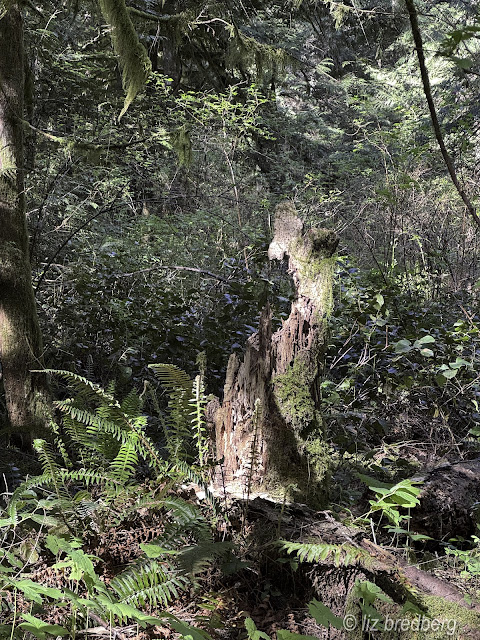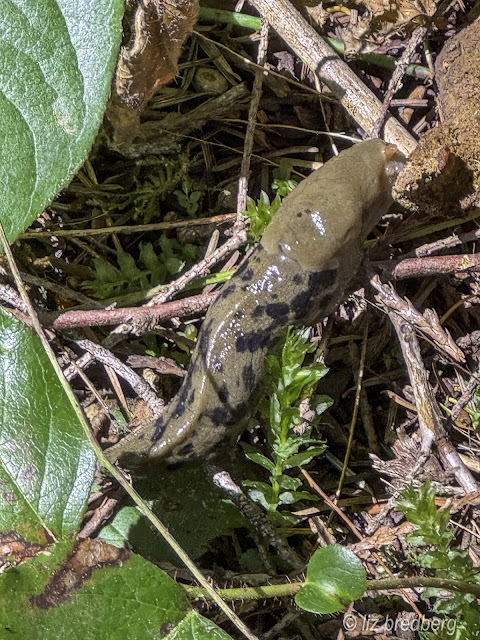7 May
A very late posting, delayed by the Annual General Meeting of the BC Federation of Naturalists. We led two guided walks in the Hamilton Wetlands and Forest, both well attended and apparently appreciated. (Apart from one visitor, who, on hearing of the potential clearing of forest by Mosaic so-called Forest Management (forest devastation?), asked whether we would consider selective logging! Somehow my reply came out a bit vehement.)
Nevertheless, the seasonal change in the forest and wetlands continue. Sometimes I am concerned that the photos are repetitive. I hope that repeated photos of changing foliage and fauna are no more tiresome for readers than are observations on repeated visits. We never tire of our visits, which change with seasons, weather, shifts in light, and vegetation and critters.
The morning's weather was changeable. On our arrival, the forest was dappled with sunlight.
In addition to living trees, the stumps and snags of the Forest often provide new material for contemplation. This stump looks to have had a very large chunk taken out of it, somehow.
Conversely, nurse logs contribute to the forest's vegetation as they decay. Huckleberries often find these logs nurturant, as do an assortment of mosses.
There seems to be more trillium in the Forest than last year. Here's an example of the way in which they change from white to pink as they mature.
At the base of the photo are false lily of the valley. They aren't your usual lily of the valley, to be sure, but "false" strikes me as rather dismissive. Perhaps in keeping with the movement towards renaming wildlife (birds, for example) suggestions re variant names would be welcomed.
Another regrettably named, but splendid plant: the skunk cabbage.
Vancouver Island doesn't have a skunk population, so any suggestion that this plant is a favoured food of skunks doesn't apply here. In fact, when they come out of hibernation, bears seek out skunk cabbage to resolve the constipation inevitable after long months of torpor. In additional fact, the name actually refers to the malodorous blooms, not yet evident, which draw pollinators that favour rotting vegetation, and repel other, more fastidious species.
Described as among the slowest creatures on earth, a speedy banana slug may move at six inches per minute. They play a valuable role in decomposition of organic matter in forests, both plant and dead animal life.















Comments
Post a Comment